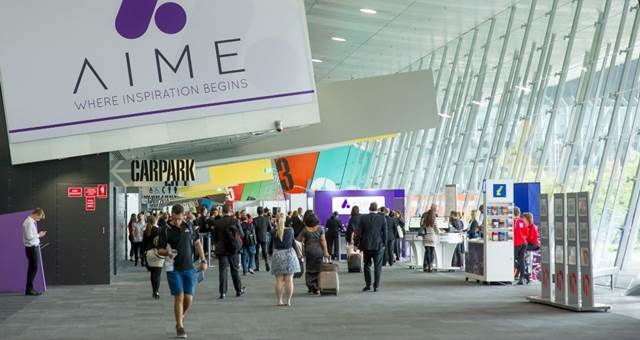

Spice caught up with AIME sales manager, Ali Thompson, to find out why exhibitions are still a crucial ingredient in the marketing mix.
Believe it or not, there is a tried and tested formula for engagement that works, one we are all familiar with in our day to day lives yet we may not even realise we’re using it, or not using it…
Let me give you a scenario that I know many of you are familiar with and guilty of – sending an email to a colleague sitting a few feet away, rather than walking over and having a conversation. We understand that it’s silly, we know it’s bad form and we recognise how disengaging it truly is.
How to embrace the pace of change
While we know that this innovative digital age has endless benefits, it has created a society where we rely on electronic gizmos to communicate. Remember how life was before mobile phones, the Internet, Google – how did we ever survive?! We may have had internal battles with fax machines or alternatively, faced the inconceivable thought of physically walking to the post office, yet we were able to communicate, businesses managed to grow and life continued, people talked to one another.
There’s no in-depth hyper-intellectual theory or uber tech-savvy algorithm to stimulate marketing and build business relationships. The social brain is in its natural habitat when we’re talking with someone face to face, it’s the unrivalled act of human connection. Disengagement produces disengagement – engagement generates engagement, it’s that simple.
Statistics show tradeshows and events are the second most effective tactic in the marketing mix following websites, which simply confirms what we all know, that people to people connection is imperative in the omni-channel world of communications, and exhibitions give brands this opportunity.
People buy from people they like
It’s human nature to want to work with people you connect with on a personal or professional level, and even more so, people buy from people and brands they trust. Successful business is built on these relationships.
Understanding consumer behaviour, the way people seek, purchase, use and evaluate products and services, gives insight into the touchpoints where you can instill trust and nurture relationships with clients and prospects.
It’s a general rule that at most exhibitions, 86 per cent of the visitors have some form of ‘buying power’, meaning these people have the authority to purchase on their company’s behalf or they influence the purchasing decision.
The value of human engagement
43 per cent of event attendees believe the value of face-to-face interactions will continue to increase over the next two years and obviously you can’t have a face-to-face relationship with a website or a sales brochure. This is why exhibitions are momentously powerful, no other form of marketing delivers current and prospective customers to your company and allows you direct, two way dialogue.
Whilst some buyers may choose suppliers simply on price or product features, the most successful business relationships I have witnessed take face-to-face communication to the next level through a solid working relationship built on trust. Exhibiting enables your company to transition from being an email in the client’s inbox to a real human, engaging them in conversation, explaining products and services in language they understand… and bam, trust is born!
So let’s get down to business
While it’s great to have a chat with industry colleagues on the show floor, let’s get down to the point of exhibiting; doing business.
The investment in exhibiting has to have a return to make it a successful marketing activity. Generating brand awareness, customer engagement and lucrative, highly targeted business leads is the name of the game.
At the Asia-Pacific Incentives and Meetings Expo (AIME) 2016, domestic and international event suppliers’ objectives were to promote their brand/product/company and generate new sales leads. To support this core objective, AIME hosted buyers from 27 countries, with 66 per cent of the prequalified buyers having a budget of USD$500,000 or more. Introducing a quality array of suppliers and prequalified buyers with money to spend, 71 per cent of the scheduled appointments were a mutual match – meaning both the exhibitor and the buyer selected to meet with one another in a private appointment; setting the scene for a fruitful show.
In a recent study, 99 per cent of marketers said they found unique value from tradeshows they did not get from other marketing mediums . The value is there but the ideal customer doesn’t just walk up and place their order, you have to get your tradeshow marketing plan right and most importantly, you have to work that stand.
How to get it right
Visitors want to see, feel, taste, hear and experience what you have on offer. Your challenge is to appeal to as many of the five senses as possible; to create an experience distinct from your competition that they will remember and more importantly, want to use.
It takes an investment both in the exhibition presence, but also in training the right staff to bring that stand to life. A strong marketing strategy should begin months out from the event, ensuring all consistent communication drives clients and prospects to your stand.
In summary, the supremacy of exhibitions is astronomical. I encourage you to embrace the most powerful ingredient in the marketing mix.
The exhibition is your stage, the attendees are your audience, and now you’ve got to learn the dance.


